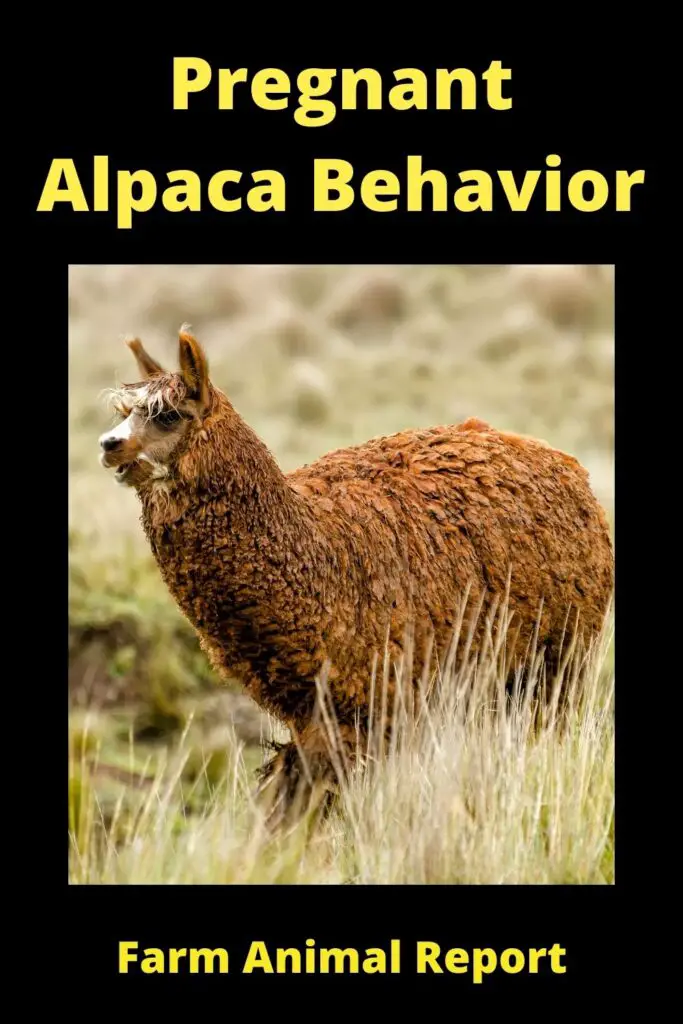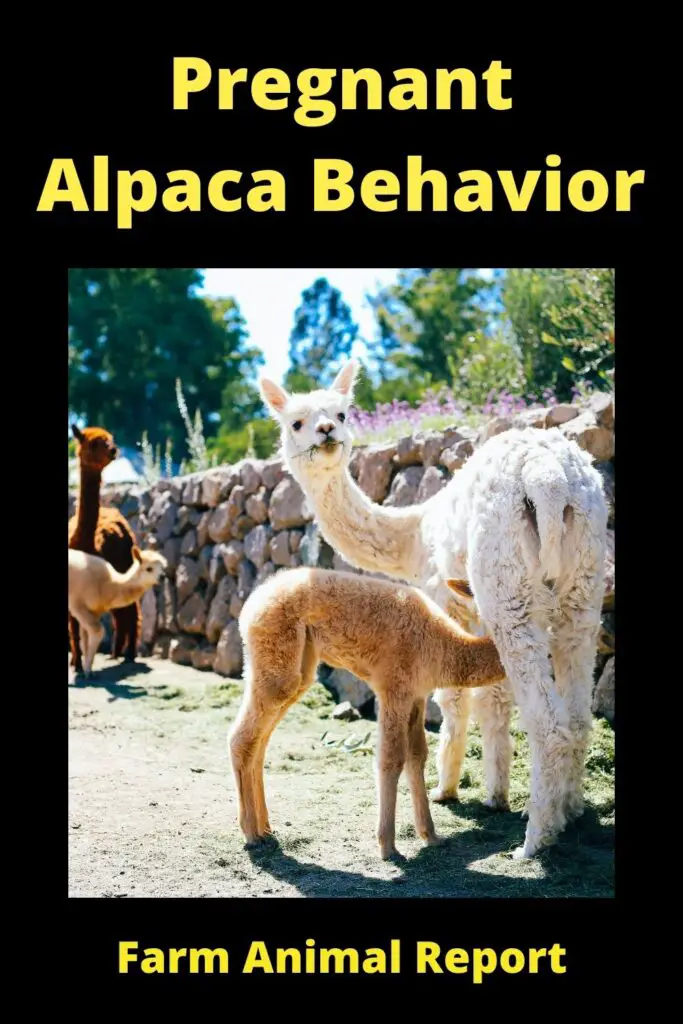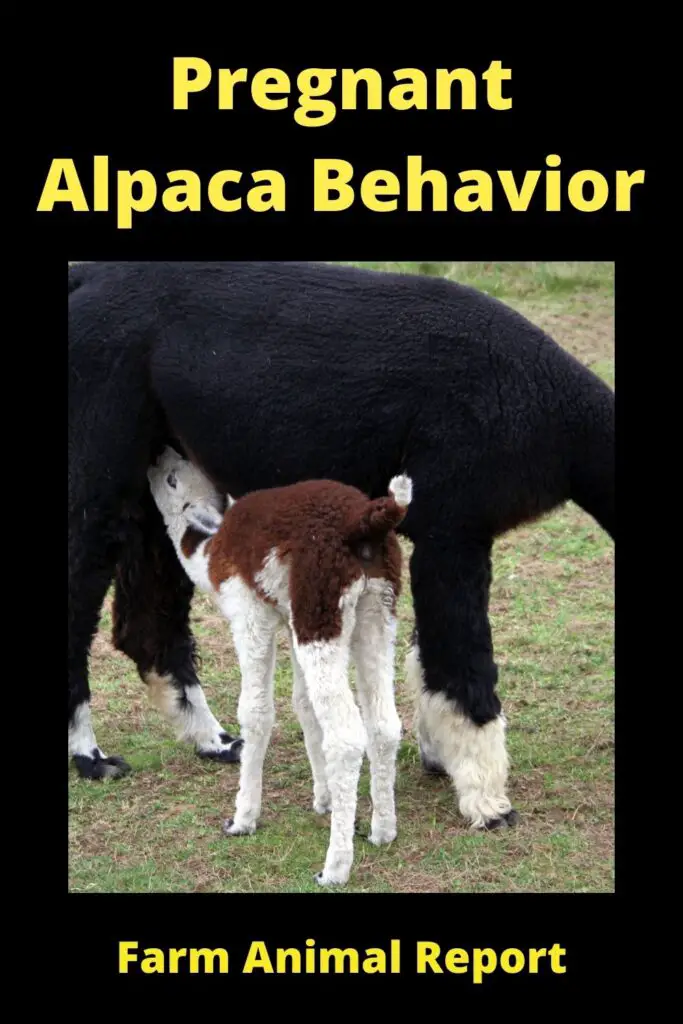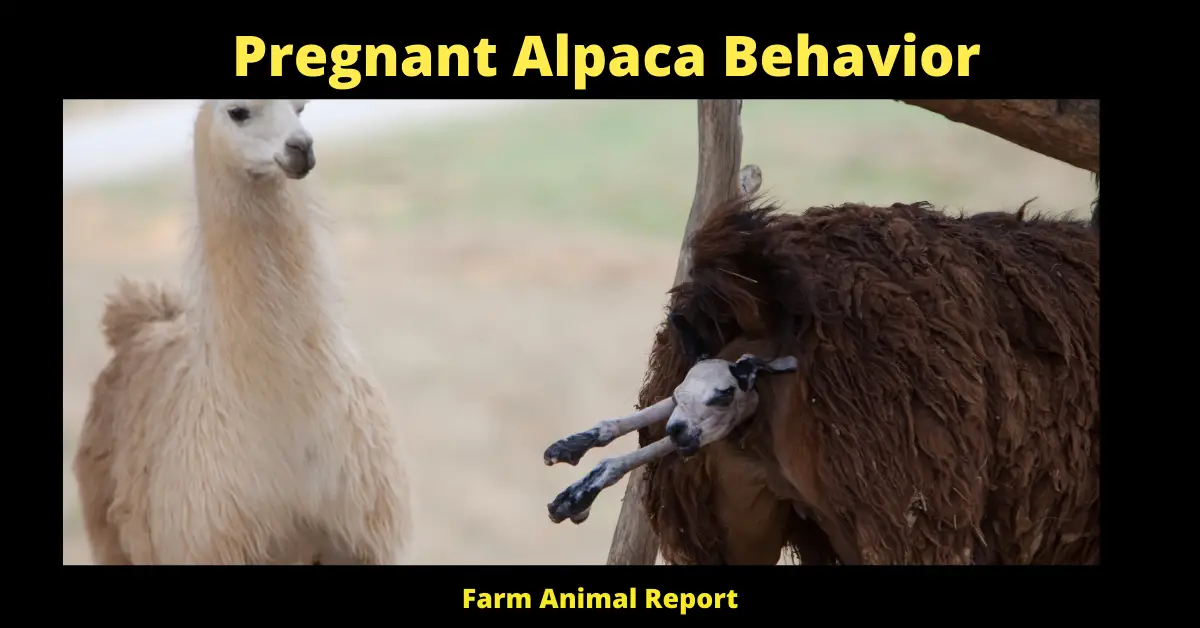As a general rule Most of the time, the camelids give birth in the daytime. They deliver babies from 10 am to 2 pm. This might seem strange to some people. But you will find that most of the animals tend to deliver their young ones in the daytime. The incubation period for the cria in new mothers and experienced females is almost the same. The pregnancy takes 11 to 12 months, and most crias are born in the daytime. The dam takes two hours to give birth which is called unpacking.
Pregnant Alpaca Behavior
A pregnant alpaca is challenging to identify if it’s her first time. When you have an experienced alpaca with a number of different cria labor and birthing, only then can you make some reasonable assumptions regarding the pregnancy. The newborn wrapped in placenta needs colostrum and warmth from the mother or the herd. Miscarriages are more common in alpacas than in other animals.
Pregnant Alpaca Behavior – If you want to define the conception of alpaca through behavior, you need to understand different cues and signs. Spitting, not sitting, and running off are some of the common signs of conception. But various females do not show any sign of conception at all. You need to do some testing after 20 to 40 days of copulation if you happen to see one.
Can you tell if an Alpaca is Pregnant?
The breeding of camelids is quite different from the husbandry of other domesticated animals. You need to understand every member of the herd. A single male with good libido is sufficient for five females. The nursing process requires a vet to remove the head of the cria if things get complicated. But telling whether a camelid is conceived or not from the behavior is not rocket science.
You can go for blood testing and ultrasound. Or you can depend on your intuition and knowledge to come up with the most common method of guessing the pregnancy from camelid behavior. The spitting and running dam will show you the signs of pregnancy.
How long is an Alpaca Pregnancy?
The juvenile of the camelid is called cria, and the fetus inside the body remains 11 to 12 months to complete the development process. The head of the baby inside the mother must remain free of damage or injuries. That’s why conceived females mostly avoid an approaching male.
The nursing and breeding of alpacas will require you to gain knowledge about these intelligent creatures. Regular vet visits will help you understand the change in their behavior and its causes. The vet will teach you about the change in behavior if any animal gets conceived and needs your special care.
What Time of day do Alpacas give Birth?
Pregnant Alpaca Behavior – If you are the head of the breeding process, you must remain vigilant for conceived females. A male could approach a pregnant animal and hurt the cria. The nursing is easy for camelids, but sometimes delivery might require a vet. You must be cautious with the pregnant animal when delivery time is near.
Most of the time, the camelids give birth in the daytime. They deliver babies from 10 am to 2 pm. This might seem strange to some people. But you will find that most of the animals tend to deliver their young ones in the daytime. There are some cases when babies are born at a different time, but these cases are only a few.
18 ways Alpaca Farmers make Money
Do Alpacas give Birth at Night?
The ideal time for a camelid mom to deliver a cria is in the daytime. This is the time when males are near and can actively guard the new offspring against predators. There are some cases in the same breed when contractions were started at night for delivery.
If an offspring passes away within the womb because of some infection or other issue, the delivery might not occur in the daytime. The ultrasound test will let you know about the health of the offspring. There are only a few cases when the camelid has delivered offspring at night. Most of the cases are registered in the daytime before 2 pm.

Do Alpacas give Birth Standing up?
Labor will take one to two hours to deliver cria after contractions. Newborns must be given colostrum after successful birthing. The herd members and mom do not eat the placenta. The dam doesn’t usually lick the offspring. They usually give birth in a standing position.
Offspring get infections without proper care if they sustain any injury during the delivery. Veterinarian visits and tests for newborns and other herd members along with a female are highly recommended. You must take protective measures against various contagious diseases to protect the young ones and the adults.
What is Alpaca Giving Birth Unpacking?
The incubation period for the cria in new mothers and experienced females is almost the same. The pregnancy takes 11 to 12 months, and most crias are born in the daytime. The dam takes two hours to give birth which is called unpacking.
The dark area is not the most preferred space for her to deliver the baby. But still, the more secure place is highly anticipated by her. When the incubation period is complete and the offspring is about to come out, this is named unpacking by the breeders.
How to tell when an Alpaca is about to Give Birth?
The labor pain will not let her sit and stand in comfort before the birthing female gets aloof from the herd on the farm. When the baby is passed from the womb, the placenta will fall out after one hour. The agitation, seclusion, and frequent position shift are signs of due time.
When the due date is near vulva will open with high blood pressure. Most births make the legs of the mother and nose get agitated even in rest. Before the milk, colostrum is extremely necessary for the newborn. A dam can take two hours in alpaca birthing. You must keep cria at normal temperature and safe from cold.

How to / or Not To Help in Delivery?
The labor and birthing of these camelids don’t need the help of the farmer. When the vulva is open, the offspring will start coming out. The placenta will come one hour later than the newborn. Colostrum will start before the milk in teats once afterbirth is passed.
The blood pressure of the animal might get high even at rest. You should keep the offspring away from cold. Alpaca birthing is common in the daytime, and the female will take two hours in normal births. The dam will get seclusion in the farm. Before the due date, her legs will get wide open along with the nose.
What Supplies Do I Need? Supplies ( Birthing Kit)
When cria comes out of the uterus, you need a clean towel to take care of the newborn. The umbilical cord of cria must be handled with care. You usually don’t need to interfere with the unpacking as it happens naturally in the daytime. But you must take care of the new life that has just started breathing in this new world. The dam will not lick the baby, and you will have to clean it yourself.
Females will take two hours to unpack and will get tired after the procedure. You should have a clean towel to protect the new one. Gloves and polythene bags are also necessary to take care of the placenta and after birth. These camelids don’t eat anything that comes out in the delivery procedure. You should take care of everything. Having lukewarm water around will always help you in taking good care of both.
Where is the Best Place for Birth?
The Cria birthing process can start after the gestation period of 11 to 12 months is completed. The cria coat will be wet, and to take care of newborn cria, you must use towels to clean them off. The best place for the delivery procedure for breeding alpacas is near the dung pile or around the herd. When the birth canal is about to open, the presence of a male and other herd members is a guarantee of safety for the young one to get accustomed to this new word.
When in the early stages of new cria, the female will stay away from other flock members. And during delivery, the gestating camelid will tend to stay in an open and safe place where there are grass and fewer chances of injury for the new soul. The whole farm with fewer chances of predators is the best place to complete the procedure and give birth to the young one.
How long do Baby Alpacas stay with their Mothers?
Females will keep feeding the offspring, and the dam’s teats mostly get full of milk. The weaning starts at 5 to 6 months, and the cria spends most of the time with the dam. The front legs of the offspring are less strong than the hind ones. With time, the offspring spends maximum time feeding.
Most mothers have an excellent idea of how to stay away from the rest of the herd when they go for a behavior test for conception. The first few hours after birth is the more important for the offspring. You must protect cria’s neck in the early hours. The offspring will leave the maternal protection after 5 to 6 months and will start living an adult life.
How do you look after Baby Alpacas?
New cria cannot afford frequent trips away from the mother. The extended progesterone levels will make the camelid love her offspring and stay close. The care for the new offspring starts from the first sign of induced ovulators. You usually don’t need veterinary assistance when the head appears during unpacking.
The breeders should learn how to take care of the offspring from a veterinarian, trusted breeders, or online sources. When the offspring is out, waxy plugs can provide protection. But you should clean the baby right away because these camelids are not fond of licking and cleaning the offspring. Try to keep the offspring warm and let it stand on its own. After that, help in feeding with the least interference.

How Long does it take a Baby Alpaca to Stand?
A cria can take 40 to 60 minutes to stand up on its feet. You shouldn’t make the cria move or stand up by using your hands or hushing. The offspring of these camelids are able to stand on their four within 50 to 60 minutes. You need to provide them with care and safety.
The offspring will start feeding within two hours. Most of the time, when the offspring stand up early, the feeding begins within 50 minutes. You should check the temperature of their mouth by putting your finger and feel sucking if they take more than two hours. If feeding doesn’t start, you should call a veterinarian to help right away and remove any discrepancies and provide care to the new soul. This way, you are ensuring good health and chances of survival for the new offspring.
Final Thoughts
Alpacas are pregnant for about 11 months, usually give birth somewhere between 8 pm-2 am each day, and generally have 1 baby at a time. As long as you’re maintaining your herd’s health with regular vet checkups, there isn’t much to worry about when it comes to the birthing process! Your alpaca will be back on its feet in no time after giving birth. However, if she does not seem like herself or is having difficulty delivering her pup take her immediately to the veterinarian so that they can help deliver the calf safely. If you think an alpaca might be pregnant make sure they stay hydrated by providing them water every few hours during their pregnancy.


